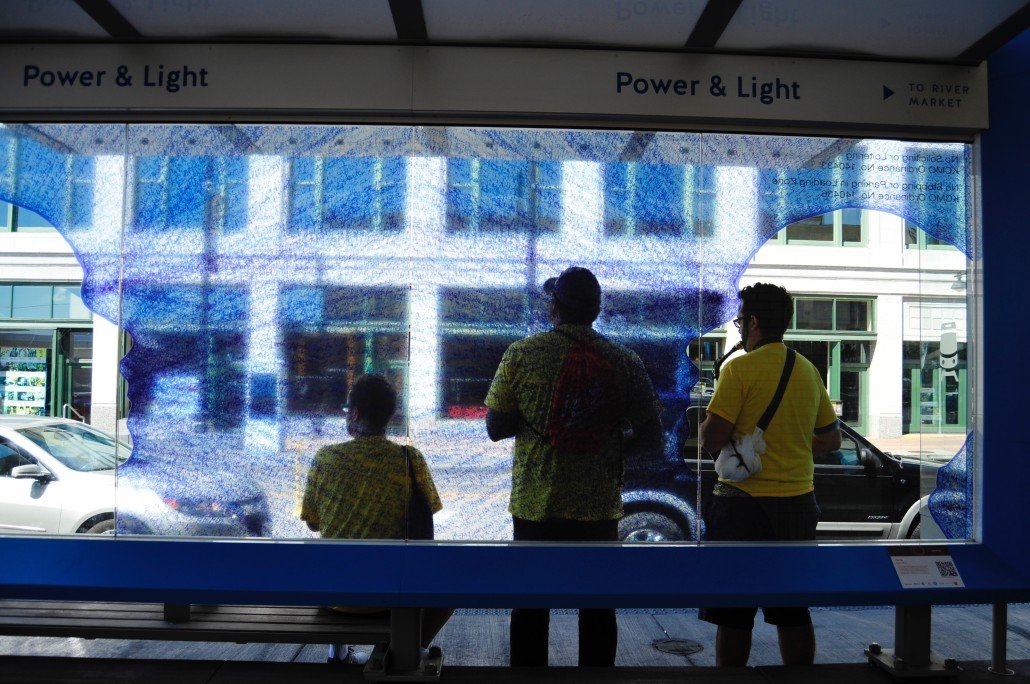Art/Music = Staged Experience
Ever wondered what it took to stage an experience? Well, look no farther than Music and Art, where we stage experiences every day.
I was a part of Mnemosyne Quartet, for 6.5 years (which is now sadly defunct due to members living in different parts of the country). At the core of what we did was stage experiences.
Mnemosyne's mission is to guide listeners toward peaceful contemplation and introspection by both heightening their awareness of the auditory environments within their daily lives and by transporting them to remote destinations.
In other words, we wanted to take found sounds from memorable places and superimpose them onto various places in the city. We were also really interested in audience participation like having audience members stream a portion of the electronics from their phone. Not only did that make them more engaged, but it created a very unique specialization of the audio—having a room full of people streaming the same thing at various volumes and all a couple milliseconds off.
The two most experience-based shows we did were Anomalous City—which was performed on top of a downtown building that contained a prairie field and a boxcar train, and Transient Harmony—which was performed along the downtown streetcar.
Anomalous City was Mnemosyne Quartet’s idea a two-hour long show of new music in an expansive space. Our initial idea was to create a continuous two-hour performance that took multiple environments and superimposed them onto a city landscape. We also wanted to map those sounds throughout the park.
The result of creating a three-dimensional space was that it ended up interacting with the city itself. The music could be faintly heard on the streets below, adding to the natural environment. The sounds not indigenous to the city, like animals from the zoo, were merged with city life. Likewise, we could hear the sounds of the city on the rooftop. Police sirens, flocks of birds and the cicadas hiding in the prairie grass influenced what we played, and how the listeners perceived their environment. We used birdsong, cars, trains, and heavy machinery in our pieces, but it was great that those sounds came from the streets below us too. With this event, we were able to achieve a fully immersive performance.
Transient Harmony was a sound installation and performance that encompassed the streetcar line from 9th and 14th street. It unified the urban soundscape with transported electronic sound environments via live performance and created an alternative to people’s expectation of the KC streetcar experience. Members of the quartet traveled with passengers presenting live music, while streaming electronics allowed Mnemosyne to connect with downtown residents both on and off the streetcar. While live performance occured only along the streetcar line, residents were able to experience the unification of Kansas City’s urban soundscape through the livestream.
Through the introduction of prerecorded environments, passengers were transported to such alternative locales as the Tallgrass Prairie, the Kansas City Speedway, and Union Station. These environments were manipulated live and broadcast to the stream.
This was our first show where we streamed the electronics because there was no way to have fixed electronics play synchronously wherever any of the members went without streaming. We also viewed it as a way for people to connect with us outside of the performance—or a way to continue listening once they left the streetcar.
While the streaming of the electronics on Transient Harmony was to solve a logistical problem, we developed it into something more in future shows, where only certain sounds, and portions of the electronics were streamed—specific textures that didn’t require precise hits/beats lining up. And one time it even saved us, when my computer decided to crash mid-performance, causing the main speakers to lose sound briefly. Luckily the computer that was hosting the streaming continued without issue.
With Mnemosyne, we understood that playing in coffee shops, or traditional concert halls wasn’t going to get us an audience. Moreover, we weren’t ever interested in just performing to an idle audience—we wanted to engage them in new ways. So we either brought ourselves to an audience, or created enough of an event that drew people in—like Kansas City Performing Media Festival.
I believe that the mindset we had in Mnemosyne is critical to businesses today that want to invest in staging experiences for their customers.

